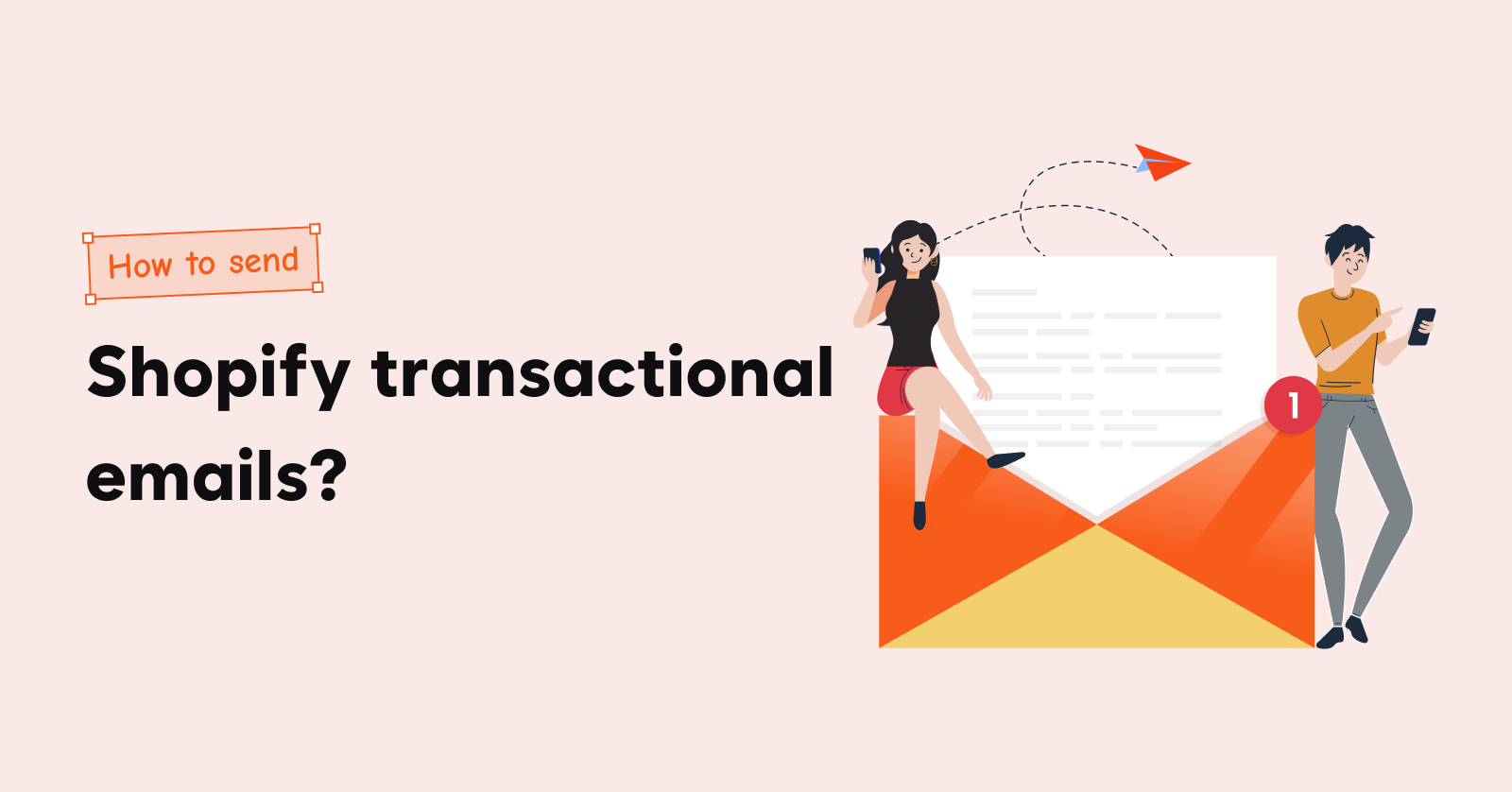Capturing email addresses is more than just a checkbox on your marketing to-do list. You’re battling short attention spans, skepticism, and an overload of online noise.
With email capture best practices, you can convert casual visitors into loyal customers and grow your email list with valuable leads.
It’s about understanding the nuances of your visitor’s needs and behaviors and showing the popups at the right moment to capture their attention.
Let’s dive into how to make that happen by looking at the 10 email capture best practices and the best email capture softwares.
Capture email addresses by engaging at the right time with Retainful’s targeted sign-up forms.
What is Email Capture?
Email capture refers to the process of collecting email addresses from visitors to your website, often with the intent of building a mailing list for email marketing purposes.
By obtaining email addresses, you can:
- Build an email list with qualified leads.
- Send newsletters, product updates, and promotional offers.
- Nurture leads through personalized email sequences.
- Increase customer loyalty with exclusive deals and insights.
- Measure customer engagement and response rates.
Multiple Ways to Capture Email Addresses
1. Website Sign-Up Forms
Place sign-up forms prominently across your website, including on the homepage, blog pages, and footer. These email capture forms can be static, part of the sidebar, or embedded within blog posts.
2. Popup and Slide-In Forms
Implement timed popups or slide-ins that appear after a visitor has spent a certain amount of time on your site or is about to exit.
These email capture forms can offer incentives like discounts or free downloads in exchange for an email sign-up.
3. Lead Magnets
Lead magnets provide something of value to the visitor, making them more willing to share their email address. This creates a win-win situation where both you and the customer benefit.
By offering lead magnets that are highly relevant to your customer, you attract subscribers who are genuinely interested in your products or services, leading to higher engagement rates.
Types of lead magnets are:
- Ebooks
- Webinars
- Free trial and demos
- Case studies and reports
Why is it Important to Capture Email Addresses?
- Building an email list
An email list is an asset you own, unlike social media followers, who are subject to platform algorithms and policies.
Building an email list gives you direct control over how and when you communicate with your customers. - Long-term engagement
Email lists enable sustained engagement with your customers over time. Subscribers have already shown interest in your brand, making them more likely to engage with your content and offer consistently. - Lead nurturing
Email marketing campaigns are a tool for nurturing leads and converting them into loyal customers.
By sending targeted, personalized email campaigns that address the needs and pain points of your customers, you can guide them through the buyer’s journey and move them closer to making a purchase. - Targeted campaigns
Capturing email addresses allows you to segment your customers based on various criteria, such as behavior, demographics, and purchase history.
Email segmentation enables you to send highly relevant and personalized email campaigns, increasing the likelihood of conversion.
8 Email Capture Best Practices
1. Offer Value
Offering value is a critical component of any successful email capture strategy. It serves as the primary motivator for visitors to provide their email addresses willingly.
This could be in the form of:
- Discounts and coupons: Offering a discount on their next purchase is a strong motivator, especially for e-commerce sites. It provides immediate, tangible benefits that can lead to a purchase.
- Free Resources: eBooks, guides, checklists, and templates are valuable resources that attract sign-ups.
- Exclusive Content: Access to exclusive articles, videos, or webinars can appeal to those interested in premium content that is not available to the general public.
Here is an example of a lead capture form by Farnam Street.
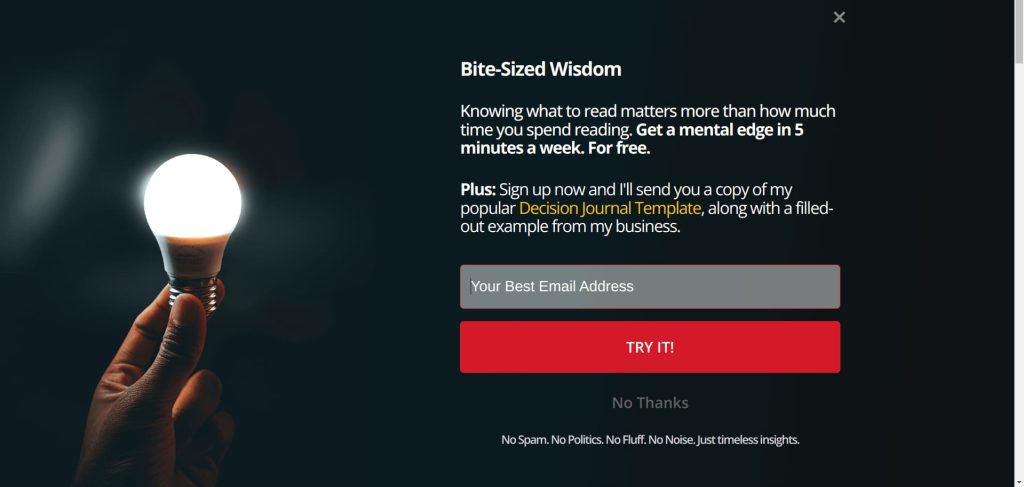
2. Place Forms Strategically
Position email capture forms in high-traffic areas of your site, such as the homepage, blog posts, and checkout pages. Consider using multiple places, like a header bar, footer, and sidebar.
Strategically placed lead capture forms do not interrupt the user’s journey. They are positioned where they naturally fit into the browsing experience, making it more likely that visitors will engage with them.
For example, a form offering a free eBook related to a blog post topic will attract readers who are already interested in that subject.
Here is how FounderOS implements this email capture best practice in their opt-in form.
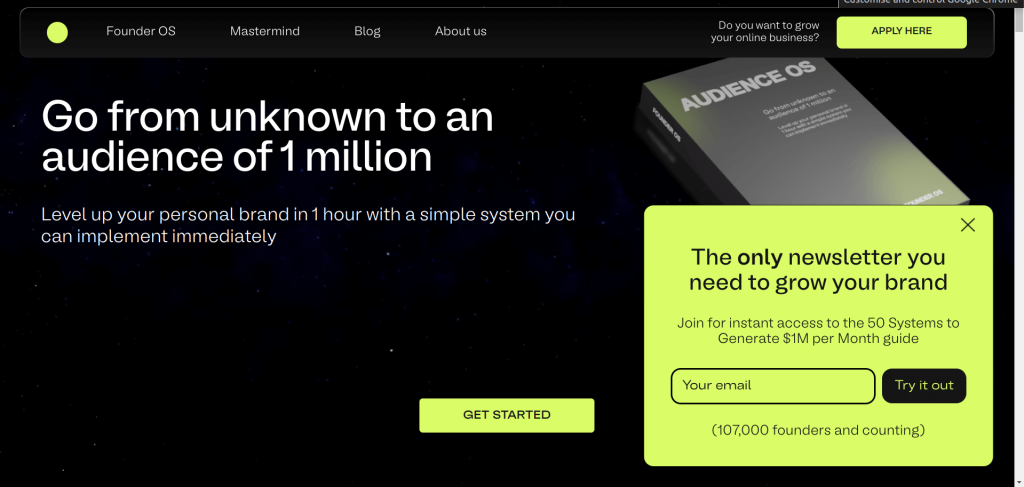
3. Use Popups Wisely
Popups, if not implemented correctly, can also be highly intrusive and disrupt the user experience, leading to frustration and increased bounce rates.
Popups that appear too frequently or immediately upon a visitor’s arrival can be jarring. Visitors need time to explore the site before being interrupted by a popup.
How to prevent popups from being intrusive?
- Use exit-intent technology to trigger popups only when a visitor shows intent to leave your site, like moving the cursor toward the browser’s close button.
- Set popups to appear after a visitor has spent a certain amount of time on the site.
- Create small, unobtrusive popups that do not cover the entire screen.
- Ensure the same visitor does not see the same popup repeatedly within a short time frame or across multiple sessions.
Trigger signup forms based on time spent, scroll depth, geo-location, and convert more with Retainful.
4. Limit the Number of Fields
Fewer fields mean less effort for users to fill out the email capture form.
Asking for too much information upfront can make users wary and less likely to provide their details.
As a email capture best practice, start with minimal fields and ask for more information gradually over time. For example, you can request additional details in follow-up emails or interactions.
5. Include Social Proof
Potential customers are more likely to sign up when they see that others have had positive experiences with your brand.
People are more inclined to join if they feel they are becoming part of a larger group with shared interests.
How to use social proof in your sign-up forms?
- Showcase testimonials: Include quotes from satisfied customers who have benefited from your email content.
- Display subscriber counts: If you have a large subscriber base, display this figure prominently. Phrases like “Join over 10,000 subscribers” can be very persuasive.
- Success stories: Share stories of how subscribers have benefited from your emails, such as increased knowledge, improved skills, or successful outcomes.
Here is how Tim Ferris does it on his website.

6. Follow Up Quickly
As a email capture best practice, send a welcome email immediately after someone subscribes. This confirms their subscription, sets expectations and engages new subscribers while your brand is fresh in their minds.
7. Have Clear CTAs
The CTA guides visitors to what to do next, and it is where the conversion really happens in the email capture form.
A well-crafted CTA with compelling language can significantly increase conversion rates by motivating visitors to take immediate action.
Here are some tips to create compelling CTAs and follow this email capture best practice:
- Use action-oriented language: Be specific about the action. Instead of a generic “Click Here,” use “Get Your Free Guide” or “Join Our Newsletter.”
- Highlight the value: Clearly articulate the benefits of taking the action. For example, “Get 20% Off Your First Purchase” or “Access Exclusive Content.”
8. Comply with Regulations
Ensure your email capture practices comply with regulations such as GDPR and CAN-SPAM.
Include necessary disclosures and obtain explicit consent to use customers’ email addresses for email marketing.
Here is how PCMag implements this email capture best practice in their newsletter sign-up form.
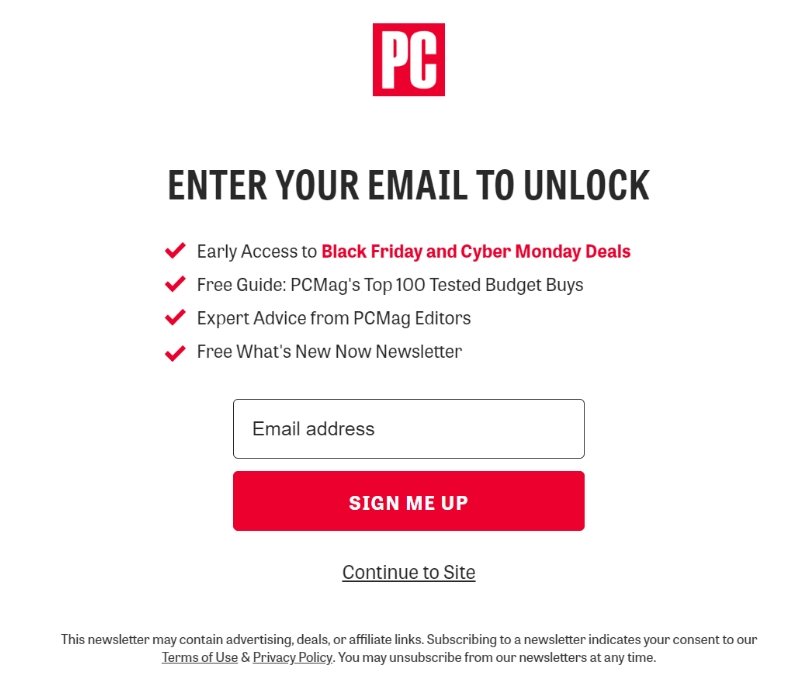
9. Ensuring Mobile-Friendliness in Signup Forms
Mobile-friendly signup forms provide a better user experience by being easy to navigate and fill out on smaller screens.
To follow this email capture best practice, use responsive design techniques to ensure your email capture forms automatically adjust to fit different screen sizes and orientations.
5 Best Email Capture Software
1. Retainful
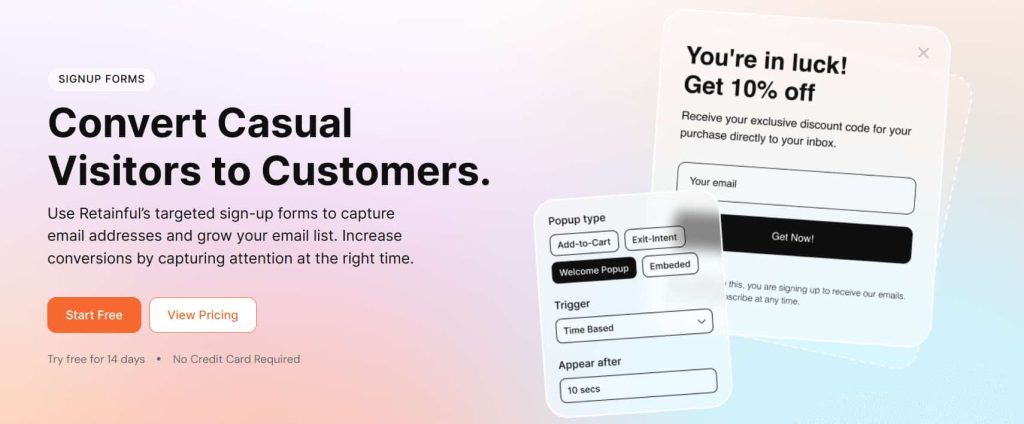
Retainful is the best email capture tool tailor-made for e-commerce stores. It offers an all-in-one email marketing solution with easy-to-use email automation at its core.
It excels in its advanced popup targeting features. You can create targeted popups and signup forms based on the user’s location, behavior on your site, device type, time spent on the site, and more.
You can trigger popups at the right time based on exit intent, scrolling, or time spent on the site. This ensures that you don’t annoy visitors by allowing you to show popups only when they are engaged.
You can design the popups with a user-friendly drag-and-drop editor that requires minimal effort from your end.
Every popup and signup form is mobile-friendly, ensuring a smooth experience on any device.
Retainful popups can also include opt-in checkboxes – important for meeting GDPR and other privacy laws.
2. Optinmonster
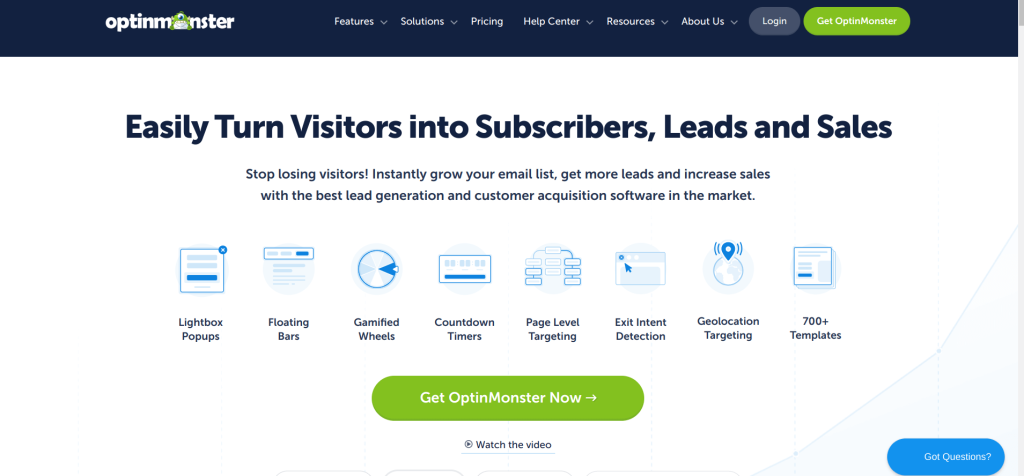
OptinMonster is an email capture tool that helps you turn website visitors into subscribers with customizable popups and sign-up forms.
It offers various popup types and templates, like lightbox popups, floating bars, and slide-ins, allowing you to choose the best way to engage visitors based on their behavior.
You can test different form versions to find the most effective ones, which helps optimize campaigns and increase email sign-ups.
However, OptinMonster is pricier than some alternatives, which might be a drawback for small businesses or startups.
3. Sumo
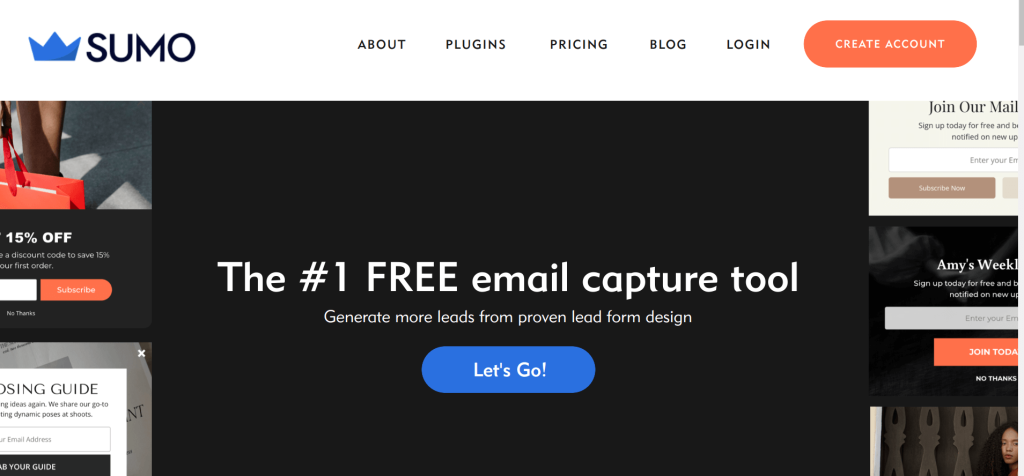
Sumo is an email capture tool that offers various types of email capture forms, including pop-ups, scroll boxes, and welcome mats. This versatility allows you to choose the most effective format for your website layout.
Each form type can be customized to fit different parts of a webpage and trigger under specific conditions, such as exit intent, time on page, or scroll percentage.
Sumo’s user-friendly interface and drag-and-drop editor make it accessible to users of all skill levels, allowing you to create and customize forms with zero hassle.
You can also conduct A/B testing to determine which forms and strategies are most effective, helping you to optimize campaigns over time.
Sumo’s paid plans can be more expensive compared to some other email capture tools on the market.
4. Optimonk
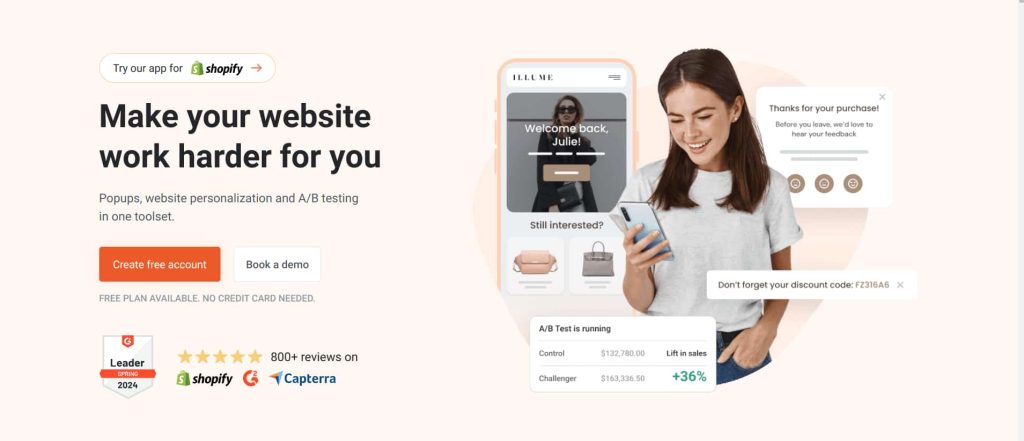
Optimonk offers various pop-up types, such as light boxes, side messages, full screens, and nano bars, so you can pick the format that best fits your needs.
OptiMonk offers nano bars, which are small, non-intrusive bars at the top or bottom of the page. They are less invasive than traditional pop-ups and stay visible as users scroll through the site.
This email capture tool integrates easily with many e-commerce platforms and email marketing tools, making it simple to sync data and automate follow-ups.
However, the wide range of features and customization options might be overwhelming if you are a new user or small business with limited resources.
5. Hellobar
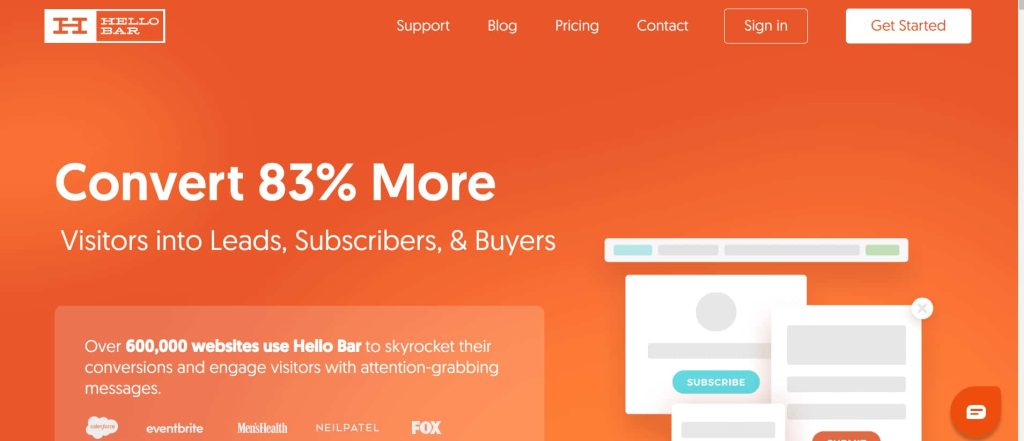
Hellobar offers a variety of notification bars, pop-ups, sliders, and page takeovers that allow you to be flexible in how you engage visitors and capture email addresses.
Hellobar’s straightforward interface and easy setup process make it accessible to users of all skill levels, including those with no technical background.
Hellobar includes built-in A/B testing capabilities, allowing users to test different versions of their forms to determine which performs best.
While Hellobar offers a free plan, the cost of the paid plans can be relatively high compared to some other email capture tools.
Target sign-up forms based on visitor behavior with Retainful and engage at the right time to convert more.
Wrapping Up!!
Implementing email capture best practices is crucial for building an email list that drives engagement and conversions.
By offering valuable incentives, optimizing sign-up forms, and ensuring a seamless user experience, you can significantly increase email capture rates.
Prioritize these email capture best practices to not only grow your email list but also create a more engaged and loyal customer base.
Frequently Asked Questions
Use sign-up forms and popups on your website tailored to email capture can significantly boost sign-up rates.
Use strategically placed sign-up forms and pop-ups. Offer incentives such as discounts, free resources, or exclusive content to encourage visitors to provide their email addresses.
Obtain explicit consent by using opt-in forms, clearly explain what subscribers will receive, and comply with regulations like GDPR and CAN-SPAM. Always provide an easy way for users to unsubscribe.
Use an email marketing platform like Retainful to create a targeted sign-up forms/popups. Include fields for the email address, a strong call-to-action, and an incentive to encourage sign-ups.
An email capture form is a tool used on websites to collect visitors’ email addresses. It includes fields for the email address, a call-to-action, and an incentive to encourage sign-ups.

